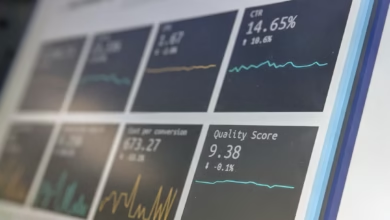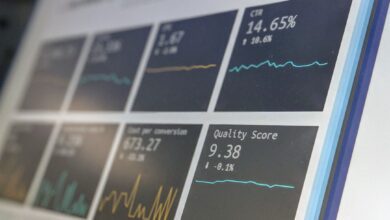Mastering Arbitrage Trading: Strategies for Profiting from Market Price Differences in Forex, Crypto, and Beyond

Arbitrage trading is a dynamic and intriguing strategy that allows traders to capitalize on price discrepancies across various markets. By simultaneously buying and selling an asset in different markets, traders can secure profits with minimal risk. This article delves into the intricacies of arbitrage trading, exploring its significance in today’s fast-paced trading environment, where opportunities abound in stock trading, forex trading, crypto trading, and more. We will examine the various strategies employed in arbitrage trading, from high-frequency trading to algorithmic trading, and discuss key techniques that span different asset classes such as commodities trading, index trading, and derivatives trading.
As we navigate through the essential aspects of arbitrage trading, we will also emphasize the importance of risk management. Balancing profit potential with thorough market analysis is crucial, whether you are engaging in day trading, swing trading, or leveraging online trading platforms. Additionally, we will touch upon trading psychology, which plays a vital role in making informed decisions amidst the rapid fluctuations of the trading landscape. Join us as we uncover the world of arbitrage trading and equip you with the knowledge to enhance your trading strategies and optimize your investment outcomes.
- 1. Understanding Arbitrage Trading: A Comprehensive Overview of Strategies and Markets
- 2. Key Techniques in Arbitrage Trading: From Forex Trading to Crypto Trading
- 3. Risk Management in Arbitrage Trading: Balancing Profit Potential with Market Analysis
1. Understanding Arbitrage Trading: A Comprehensive Overview of Strategies and Markets
Arbitrage trading is a powerful strategy that allows traders to exploit price differences across various markets for profit. This practice is not limited to one specific market; it encompasses a range of trading environments, including stock trading, forex trading, options trading, and even crypto trading. By understanding and applying arbitrage trading techniques, traders can capitalize on inefficiencies that exist between different markets or instruments.
At its core, arbitrage trading involves purchasing an asset in one market at a lower price and simultaneously selling it in another market at a higher price. This strategy can manifest in various forms, such as spatial arbitrage, where traders benefit from price discrepancies between different geographical locations, or temporal arbitrage, which exploits price variations over time.
Several trading strategies can incorporate arbitrage opportunities. For instance, day trading and swing trading often involve quick transactions to capture these price differences. In the realm of derivatives trading, traders may utilize arbitrage to hedge against risk while taking advantage of favorable price movements in related assets. High-frequency trading (HFT) is another area where arbitrage strategies thrive, as it relies on sophisticated algorithms to execute trades at lightning speed, capitalizing on fleeting price discrepancies.
In addition to traditional markets, arbitrage trading is prevalent in commodities trading and energy trading, where fluctuations in supply and demand can create significant price variations. Online trading platforms have made it easier for traders to identify and execute arbitrage opportunities across different assets, including ETFs, CFDs, and binary options.
Traders engaging in arbitrage must be well-versed in market analysis, including technical analysis and fundamental analysis, to identify potential opportunities accurately. Additionally, understanding trading psychology is crucial, as emotional decision-making can impede the execution of arbitrage strategies. Effective risk management is vital in arbitrage trading, especially when using leverage trading or margin trading, as the potential for rapid losses can be significant if trades do not go as planned.
Overall, arbitrage trading is a sophisticated approach that requires a deep understanding of various markets and trading strategies. By leveraging price differences and employing sound trading principles, traders can enhance their potential for profit while minimizing risks associated with market volatility.
2. Key Techniques in Arbitrage Trading: From Forex Trading to Crypto Trading
Arbitrage trading is a powerful strategy that takes advantage of price discrepancies across different markets or financial instruments. Traders employ various techniques to maximize their profits, utilizing both traditional and modern trading methods. Here's a look at some key techniques in arbitrage trading, spanning from forex trading to crypto trading.
One of the most common forms of arbitrage is found in forex trading. Traders can exploit variations in currency pairs across different online trading platforms. For instance, if the EUR/USD pair is priced lower on one exchange compared to another, a trader can buy at the lower price and sell at the higher price, thus profiting from the difference. This technique can be enhanced through algorithmic trading, which automates the process and allows for high-speed transactions, making it easier to capitalize on fleeting opportunities.
In the realm of crypto trading, arbitrage opportunities frequently arise due to the volatile nature of cryptocurrencies. Traders can buy Bitcoin on one exchange where the price is lower and sell it on another where the price is higher, often within minutes. This practice is not limited to just Bitcoin; it can also be applied across various altcoins and tokens. Effective risk management is crucial here, as the volatility can lead to rapid price changes that may affect the profitability of the trade.
Options trading and futures trading also present arbitrage opportunities. In these markets, traders can engage in strategies such as convertible arbitrage, where they exploit price differences between the underlying asset and its derivatives. For example, if a stock is trading at a premium in options trading relative to its actual stock price, traders can short the stock while going long on the option, locking in a risk-free profit if executed correctly.
Scalping is another technique commonly used in day trading and arbitrage trading. In this strategy, traders make numerous trades throughout a single day, aiming to profit from small price movements. By employing technical analysis and closely monitoring market conditions, scalpers can quickly identify and act upon arbitrage opportunities, particularly in fast-moving markets like commodities trading or index trading.
In the context of energy trading, arbitrage can occur when there are discrepancies in prices for energy commodities across different markets. Traders can buy energy at a lower price in one market and sell it in another where the price is higher, leveraging the market’s inefficiencies to generate profit.
Regardless of the trading type—be it binary options, CFD trading, or even margin trading—successful arbitrage trading requires a thorough understanding of market analysis and trading strategies. Traders need to be adept at both fundamental analysis and technical analysis to identify price discrepancies effectively. Moreover, trading psychology plays a critical role in managing emotional responses, particularly in high-frequency trading scenarios, where rapid decision-making is essential.
Overall, the ability to exploit price differences through various arbitrage techniques across different trading markets can lead to significant profits for savvy traders. By combining these strategies with effective risk management and market analysis, traders can navigate the complexities of arbitrage trading and enhance their overall trading performance.
3. Risk Management in Arbitrage Trading: Balancing Profit Potential with Market Analysis
In the realm of arbitrage trading, effective risk management is paramount for achieving consistent profitability while navigating the complexities of various markets. Traders must balance the potential for profit against the inherent risks associated with price discrepancies across different trading platforms.
To manage risks effectively, one should employ a combination of robust market analysis techniques, including both technical analysis and fundamental analysis. Technical analysis involves studying price patterns and market trends, which can help traders identify potential entry and exit points for their arbitrage strategies. In contrast, fundamental analysis focuses on the underlying economic indicators or news events that may impact asset prices, providing insights into market movements that could affect arbitrage opportunities.
Additionally, traders should consider the implications of leverage and margin trading in their risk management strategies. While leverage can amplify returns, it also increases exposure to significant losses. Therefore, understanding the proper use of leverage is crucial for both stock trading and forex trading. For instance, in futures trading or options trading, a trader might leverage their position to capitalize on small price differences; however, they must be prepared for the volatility that comes with it.
Moreover, the psychology of trading plays a vital role in risk management. Traders need to maintain discipline and avoid emotional decision-making, especially in fast-paced environments like high-frequency trading or day trading. Developing a solid trading strategy that incorporates risk tolerance levels can help mitigate impulsive trades driven by fear or greed.
Lastly, utilizing online trading platforms that offer tools for risk assessment and management, such as stop-loss orders and position sizing calculators, can bolster a trader's ability to navigate the intricacies of arbitrage trading. By integrating these risk management strategies with ongoing market analysis, traders can enhance their chances of achieving profitable outcomes in various trading domains, including crypto trading, commodities trading, index trading, and energy trading.
In summary, successful arbitrage trading hinges on a well-rounded approach to risk management, where balancing profit potential with comprehensive market analysis is key. As traders refine their skills in areas like social trading, copy trading, and scalping, they can better position themselves to exploit market inefficiencies while minimizing exposure to risk.
In conclusion, arbitrage trading presents a compelling opportunity for traders looking to capitalize on price discrepancies across various markets. Whether you're engaged in stock trading, forex trading, or even crypto trading, understanding the nuances of arbitrage can significantly enhance your trading strategies. By employing key techniques such as technical analysis and risk management, traders can balance profit potential with the inherent risks associated with market fluctuations.
As you explore options trading, futures trading, or day trading, consider how arbitrage strategies can fit into your broader trading approach. From high-frequency trading to scalping, the ability to swiftly identify and act upon price differences is crucial. Additionally, staying informed about market trends and employing algorithmic or copy trading can further optimize your arbitrage efforts.
Ultimately, successful arbitrage trading hinges on a solid foundation in market analysis, trading psychology, and a keen understanding of leverage trading and margin trading. By integrating these elements into your trading toolkit, you can navigate the complexities of the financial markets more effectively and unlock the potential for profitable trading outcomes. Remember, continuous learning and adapting your strategies will be key to thriving in the dynamic world of online trading platforms.
References:
– [Author, Year, URL]
– [Author, Year, URL]
– [Author, Year, URL]





